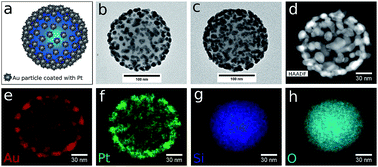当前位置:
X-MOL 学术
›
Faraday Discuss.
›
论文详情
Our official English website, www.x-mol.net, welcomes your
feedback! (Note: you will need to create a separate account there.)
Optimizing hot carrier effects in Pt-decorated plasmonic heterostructures
Faraday Discussions ( IF 3.3 ) Pub Date : 2018-11-15 , DOI: 10.1039/c8fd00150b Jorge U. Salmón-Gamboa 1, 2, 3, 4 , Mayela Romero-Gómez 1, 2, 3, 4 , Diane J. Roth 1, 2, 3, 4 , Matthew J. Barber 1, 2, 3, 4 , Pan Wang 1, 2, 3, 4 , Simon M. Fairclough 1, 2, 3, 4 , Mazhar E. Nasir 1, 2, 3, 4 , Alexey V. Krasavin 1, 2, 3, 4 , Wayne Dickson 1, 2, 3, 4 , Anatoly V. Zayats 1, 2, 3, 4
Faraday Discussions ( IF 3.3 ) Pub Date : 2018-11-15 , DOI: 10.1039/c8fd00150b Jorge U. Salmón-Gamboa 1, 2, 3, 4 , Mayela Romero-Gómez 1, 2, 3, 4 , Diane J. Roth 1, 2, 3, 4 , Matthew J. Barber 1, 2, 3, 4 , Pan Wang 1, 2, 3, 4 , Simon M. Fairclough 1, 2, 3, 4 , Mazhar E. Nasir 1, 2, 3, 4 , Alexey V. Krasavin 1, 2, 3, 4 , Wayne Dickson 1, 2, 3, 4 , Anatoly V. Zayats 1, 2, 3, 4
Affiliation

|
Hot carrier generation by light in various semiconductors and metallic nanostructures is important for many photocatalytic and photochemical processes, including water and hydrogen splitting. Here, we report on investigations of hot electron generation and extraction from Pt decorated SiO2–Au nanoparticles using the degradation of methylene blue dye as a test-bed. Enhanced catalytic activity was found with an increase of Pt loading on the surface of the heterostructures. The small size of the Au nanoparticles (∼12 nm) decorating the silica nanoparticles reduces hot electron collisions and related thermalization processes, since charge carriers have short paths to the surface where reactions take place and where Pt is situated. The heterostructures exhibit a broad plasmonic resonance in the visible wavelength range from 500 to 700 nm and hot carrier generation predominately takes place under resonant excitation. Electron-microscopy characterization and numerical modelling have allowed the optimization of Pt coverage for hot-electron transfer, consisting of a thin Pt shell covering the Au nanoparticle with Pt nanoparticles additionally placed on top. This geometry provides an increased number of active sites for methylene blue degradation and promotes separation of charge carriers generated by plasmonic excitations in Au. Such SiO2–Au–Pt nanoparticles are attractive for hot-electron production due to the tunability of their plasmonic resonance and enhanced catalytic activity.
中文翻译:

优化Pt装饰的等离激元异质结构中的热载流子效应
在各种半导体和金属纳米结构中,由光产生的热载流子对于许多光催化和光化学过程(包括水和氢的分解)很重要。在这里,我们报告有关热电子的产生和从装饰铂的SiO 2中提取的研究。-使用亚甲基蓝染料降解的金纳米颗粒作为试验床。随着异质结构表面上Pt负载的增加,发现催化活性增强。装饰二氧化硅纳米粒子的小尺寸Au纳米粒子(〜12 nm)减少了热电子碰撞和相关的热化过程,因为电荷载流子到达反应发生和Pt所在的表面的路径很短。异质结构在500至700 nm的可见波长范围内表现出宽等离子共振,并且在共振激发下主要发生热载流子。电子显微镜的表征和数值建模可以优化热电子转移的Pt覆盖率,由覆盖Au纳米颗粒的Pt薄壳组成,另外还在顶部放置了Pt纳米颗粒。这种几何形状为亚甲基蓝的降解提供了更多数量的活性位点,并促进了由Au中的等离激元激发产生的载流子分离。二氧化硅2 -Au-Pt纳米粒子由于其等离子体共振的可调谐性和增强的催化活性而对热电子生产具有吸引力。
更新日期:2019-05-29
中文翻译:

优化Pt装饰的等离激元异质结构中的热载流子效应
在各种半导体和金属纳米结构中,由光产生的热载流子对于许多光催化和光化学过程(包括水和氢的分解)很重要。在这里,我们报告有关热电子的产生和从装饰铂的SiO 2中提取的研究。-使用亚甲基蓝染料降解的金纳米颗粒作为试验床。随着异质结构表面上Pt负载的增加,发现催化活性增强。装饰二氧化硅纳米粒子的小尺寸Au纳米粒子(〜12 nm)减少了热电子碰撞和相关的热化过程,因为电荷载流子到达反应发生和Pt所在的表面的路径很短。异质结构在500至700 nm的可见波长范围内表现出宽等离子共振,并且在共振激发下主要发生热载流子。电子显微镜的表征和数值建模可以优化热电子转移的Pt覆盖率,由覆盖Au纳米颗粒的Pt薄壳组成,另外还在顶部放置了Pt纳米颗粒。这种几何形状为亚甲基蓝的降解提供了更多数量的活性位点,并促进了由Au中的等离激元激发产生的载流子分离。二氧化硅2 -Au-Pt纳米粒子由于其等离子体共振的可调谐性和增强的催化活性而对热电子生产具有吸引力。











































 京公网安备 11010802027423号
京公网安备 11010802027423号